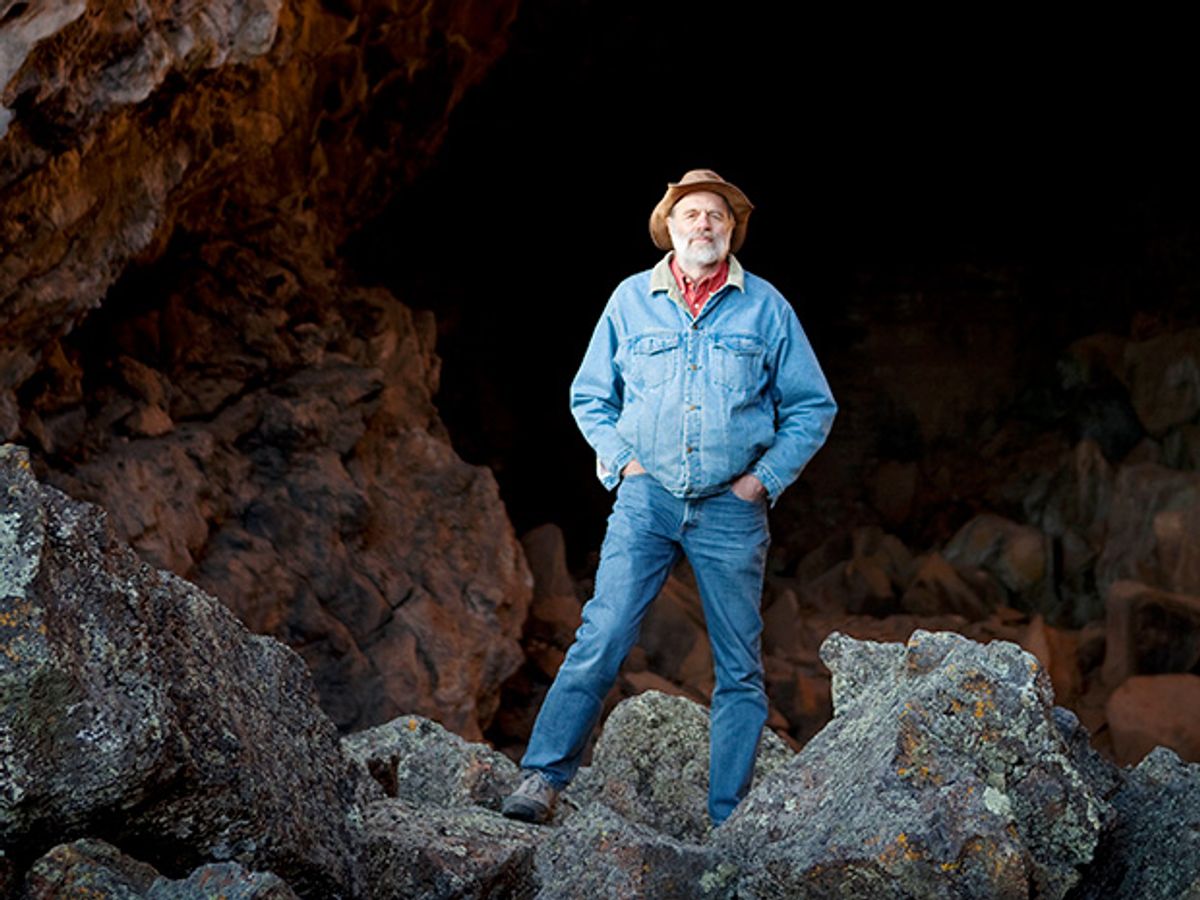Dream Jobs 2010: Ronald Thomas, Engineer Versus the Volcano
Ronald Thomas tracks the weird and vivid bursts of lightning that accompany erupting volcanoes

This profile is part of IEEE Spectrum’s Special Report on Dream Jobs 2010.

Late one night last March, the icy peak of Mount Redoubt in south central Alaska erupted, sending thick plumes of ash and steam more than 10,000 meters into the air. It was a nightmare for local residents and pilots but a dream come true for Ronald Thomas.
Thomas, an electrical engineering professor at the New Mexico Institute of Mining and Technology, studies lightning, particularly the lightning that accompanies volcanic eruptions. Mount Redoubt had started rumbling two months earlier, and just two days after the first shudder, Thomas, one of his graduate students, and a colleague were on a plane to Anchorage. Trudging through swirling snow, they set up four sensing stations around the mountain that would help them create 3-D pictures of the lightning inside the volcano’s ash plumes.
For Thomas, the trip was a heady rush. “Alaska is always fun, even in the winter,” he insists. “That’s when tourists aren’t around.”

Lightning is, of course, the sudden release of a massive buildup of electrical charge in the atmosphere. But that simple description glosses over many unsolved mysteries: why, for instance, only some storms produce lightning; why some lightning discharges up from clouds rather than down; and why certain types of volcanoes—but not all—give off spectacular bursts of lightning. Getting to the heart of such questions is Thomas’s quest.
He first got hooked on lightning as an 8-year-old: His father, a high school science teacher, had “a machine that you cranked and it made sparks like lightning,” he recalls. He spent many happy hours cranking that machine. By high school, he knew he wanted to be an electrical engineer.
In 1961, he entered an engineering co-op program at New Mexico State University in Las Cruces. During a nine-month stint at a naval communications station in the Philippines, Thomas tracked transit satellites, the forerunners of GPS satellites, by measuring the Doppler shift in their radio signals. Later he followed sounding rockets at NASA’s Wallops Island facility off the coast of Virginia.
He graduated with a BSEE in 1966 and moved on to Utah State University, where he used rockets to study chemical reactions in the upper atmosphere. By 1973 he had completed a Master’s in atmospheric physics, a Ph.D. in electrical engineering (also from Utah), and a postdoc at the University of Pittsburgh. He then settled down at the University of Colorado at Boulder, designing and building rocket-launched instruments to study ozone in the mesosphere, the layer of atmosphere directly above the stratosphere.
In 1989, he joined the faculty of New Mexico Tech, in Socorro, where an abundance of thunderstorms has long drawn researchers interested in lightning. He helped develop the portable lightning sensors that the National Weather Service and the National Severe Storms Laboratory now use, downsizing the equipment to fit into picnic coolers. A typical lightning bolt unleashes not only light and sound but also millions of current impulses that radiate radio waves over a broad range of frequencies, from a few kilohertz up to a few gigahertz. To record the impulses’ times and magnitudes, the lightning sensor has an antenna and receiver, a computer, a timing interface, and a GPS receiver.
About four years ago, Thomas and a few colleagues formed the world’s only research team devoted to the curious phenomenon of volcano lightning. At the time, experts assumed volcano lightning was identical to thunderstorm lightning—branching flashes that last about half a second. But the team soon discovered there was much more going on. At the January 2006 eruption of Alaska’s Mount St. Augustine, they observed a continuous series of millisecond-long explosive sparks right at the mouth of the volcano as it started to erupt. The May 2008 eruption at Chaitén, in southern Chile, brought another surprise: horizontal lightning stretching 8 kilometers across.
At Mount Redoubt last year, Thomas and his coworkers were able, for the first time, to gather data starting with the very first eruption. To their astonishment, they discovered that lightning flashes accompanied every single one of the more than 20 major eruptions that occurred over 13 days.
Picking optimal spots for the sensors is critical, they’ve learned: The ideal location has a line of sight to the plumes above the volcano, as well as access to electrical service and the Internet. The researchers sometimes find themselves knocking on doors to get permission to set up their equipment in people’s backyards. The hard part, Thomas says, is convincing them “we’re not spying for the tax man.”
At Redoubt each lightning flash created thousands of radio impulses that hit the sensing stations’ receivers at different times. By correlating those times and triangulating the distances, the sensor array pinpointed the location of each impulse. Thomas used the data to create 2-D maps of the charge structure inside the volcano’s ash cloud. The maps show where the lightning originated and how it spread. Thomas’s goal is to understand how and why the charge buildup occurs in the first place.
It’s all so fascinating to Thomas that he says he’d plan every vacation near a volcano if he could. Sure, camping in the deserts of New Mexico has its charms, rattlesnakes notwithstanding. And yes, the natural forces he studies are violent and, to many people, terrifying. But nothing compares to the thrill of getting near an active volcano, he says. “The most dangerous part of the trip is really the driving.”
This article originally appeared in print as “Engineer Versus the Volcano.”
To Probe Further
For more articles and special features, go to Dream Jobs 2010.